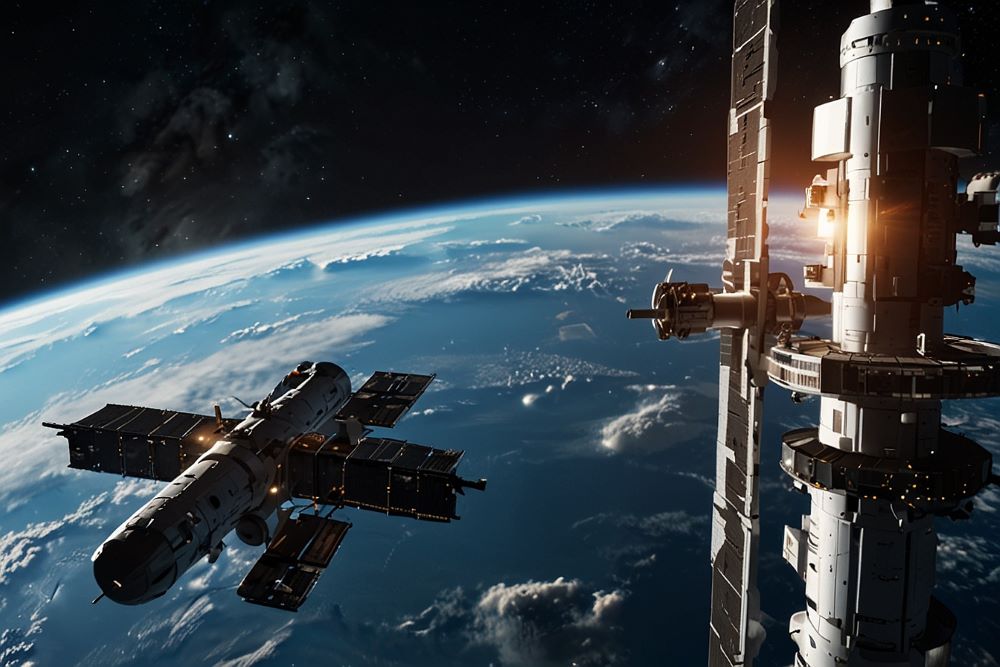The Shocking End of the ISS: What’s Next for Space Travel?

The clock is ticking toward 2030, and with it, the iconic International Space Station (ISS) prepares to hang up its boots. This isn't just another retirement; it's the dawn of a thrilling new era in space exploration, driven by ambitious private companies eager to lead the charge into the cosmos.
As the ISS wraps up its groundbreaking mission, a world of possibilities awaits, signaling the rise of commercial space travel. Picture this: private entities taking charge of space stations, pushing the boundaries of scientific research, tourism, and business ventures beyond our blue planet. With the ISS's departure, space is about to get a lot more accessible and exciting.
Launched in 1998, the ISS has stood as a beacon of international cooperation, uniting astronauts from all over the globe in a shared mission of scientific inquiry. It has made waves in advancing our understanding of the universe and has spun off technologies that improve everyday life on Earth. But like all great stories, the ISS too has a conclusion. NASA's decision to retire the ISS by 2030 is paving the way for private companies to step in and elevate the game.
Enter NASA's Commercial Low Earth Orbit Destinations (CLD) program—a strategic initiative designed to smooth the transition from governmental to commercial space stations. Through this program, NASA is forging partnerships with private companies, providing the support and funding needed to develop new space infrastructures. Announced in September 2025, these partnerships promise to align industry schedules with the winding down of the ISS, ensuring that the next chapter in space exploration is seamless.
So, who are the key players in this commercial space race? Axiom Space, based in Houston, is not just dreaming; they’re building the world's first independent space station, the Axiom Station, which will initially dock with the ISS before flying solo. Launching their first commercial module in 2027, Axiom is set to host astronauts for cutting-edge research and private sector activities in low Earth orbit.
Then we have Vast Space, a Californian startup aiming to revolutionize space travel with their Haven-1 station, equipped with artificial gravity. This innovation could significantly reduce the health risks associated with long-term space missions, making space travel safer and more sustainable than ever before. Launching in 2026, it’s a new frontier not just for research, but also for tourism.
And let’s not forget Voyager Technologies, in collaboration with Airbus, developing Starlab—a commercial space station that promises to minimize costs by utilizing SpaceX technology for a single launch assembly. This could set a new standard for efficiency in space operations.
International collaboration remains essential in this venture. Axiom is looking to partner with India’s ISRO for future missions, showcasing the global nature of this new space race. Meanwhile, the European Space Agency has invested €75 million in partnerships to ensure that logistical needs for these commercial stations are met.
As we look to the future, the transition from the ISS marks a monumental shift in humanity's quest for the stars. The commercial space race isn't just about new stations; it's about democratizing space, making it accessible to a wider audience than ever before. The opportunities for scientific research, tourism, and industry are limitless, and as we approach 2030, this thrilling adventure into the unknown is just beginning.
In conclusion, while we bid farewell to the ISS, we are on the brink of a new era in space exploration, one that promises to be not only inclusive and innovative but also exhilarating. The future of our journey into space is bright, and the world is watching with bated breath.


















